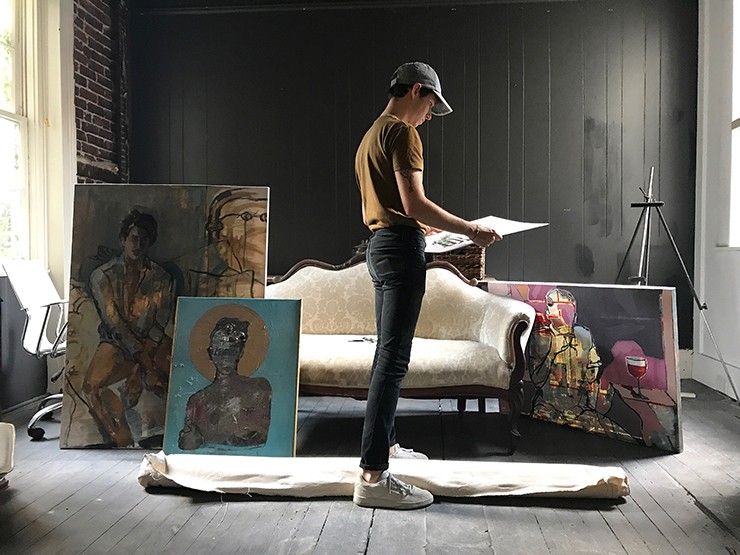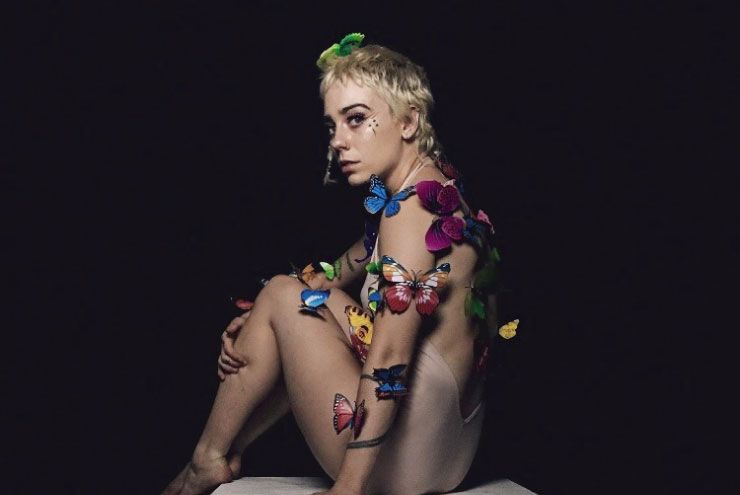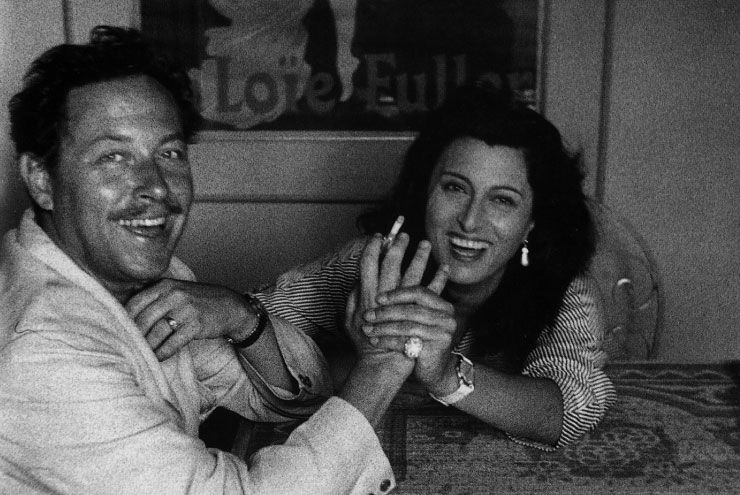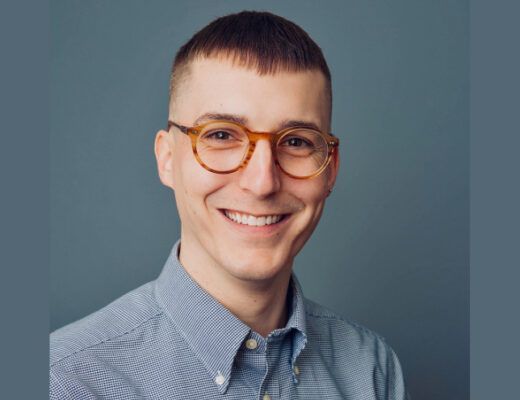By Josh Watkins
Mississippi is known for its soul food, singing the blues, and deep southern culture. But Oxford painter Jonathan Kent Adams dreams of putting the Magnolia State on the map for something more—queer art.
Adams grew up in a small town outside of Yazoo City, building forts in the woods, wading in the creek, and running through pastures to his grandparents’ house. He dabbled in singing, which taught him passion, and learned self-discipline by playing basketball.
As his innate creative talent began to surface, Adams began making props for his high school’s musicals and working as an editor on the yearbook. “When I edited the yearbook, we did most of the layouts on paper, not on the computer,” Adams explains. “I see now how this influences the graphic quality of my work.”
Adams began college as a criminal justice student at the University of Mississippi, but quickly shifted his focus to the fine arts. His creative studies weren’t always easy, however, as his ideas were often discouraged or written off as “crazy” by certain professors. But with the unwavering insistence and support of other teachers, Adams managed to keep his passion alive. “I was taking an intro to art class for an elective,” he says. “My teacher was insistent that I take a painting class, and I was always the one staying past midnight to sit with a still life. I fell in love on those nights.”
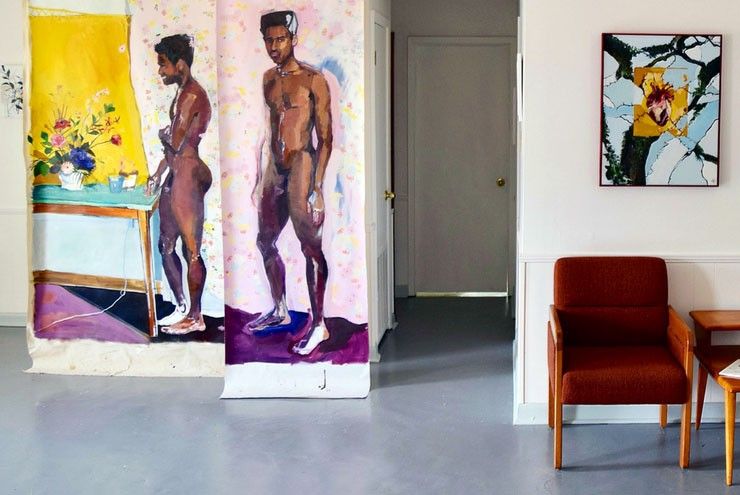
Queer painter Jonathan Kent Adams’ studio in Oxford, Mississippi. Photo courtesy Jonathan Kent Adams.
His first painting was a gift for a couple who had lost their premature baby. The thank you note he received opened his eyes to the true impact art can have on people. “Looking back, the painting was pretty awful from a technical standpoint—but after reading that letter, I realized my ability to help heal others by creating,” Adams says. “To be honest, when I started to play with painting, I realized its ability to heal me too.”
Adams describes his coming out experience as complicated because of his Christian faith—he found God in his early teens, as he sought security and answers for his tensions regarding same-sex attractions. His personal healing journey began after he took the opportunity to study under renowned painter Mary Beth McKenzie at the Art Student’s League of New York in summer 2012. There, he began to meet queer people in the church—an experience that offered validation, security, and reconciliation. “I think the tension of growing up [in Mississippi] influenced the way I create,” Adams says. “I felt like such an outsider growing up. In fourth or fifth grade, there was one guy who called me a girl and sissy several times. My mom would tell me the story of The Little Engine That Could [to console me]. I have that tattooed on my forearm now. In New York, I experienced a bigger world, a more inclusive and diverse world. I still dream of a Mississippi like that.”
After completing his studies in New York, Adams returned to Mississippi and has been creating ever since. Following the Pulse nightclub shooting in 2016, Adams painted individual portraits of each of tragedy’s 49 victims, as well as crafted a rainbow anatomical heart. The tribute garnered lots of social media attention—including comments from the friends and families of those lost—and Adams was invited to display his work at the University of Mississippi.
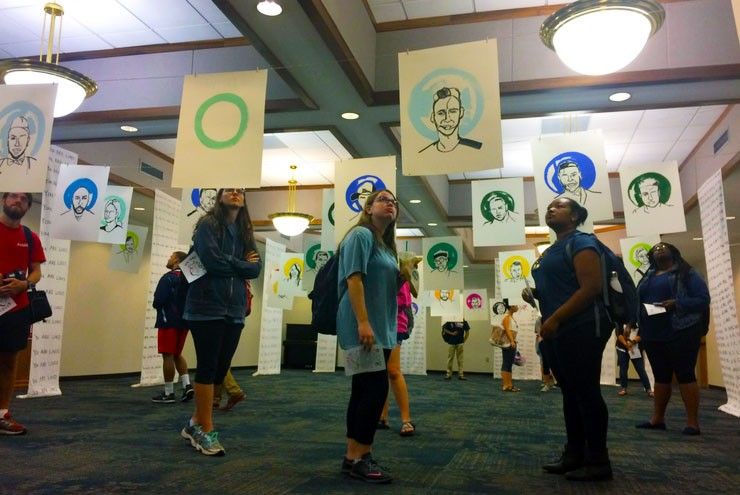
Jonathan Kent Adams’ Pulse tribute at the University of Mississippi. Photo courtesy Jonathan Kent Adams.
Adams also takes personal pride in an installation he created in Columbus, Mississippi, in which he sprawled the words “We are all the same” across the gallery’s walls in hopes to reinstate a sense of unity within a world consumed with politics and culture wars. “The center focus of the installation was a recreation of the crucifix,” Adams explains. “The crucifix is abstracted and the main focus [of the painting] is actually a set of lungs. In my work, I often use anatomy as a symbol of our unity as humans—the lungs within the crucifix were that for me.”
When asked why he’s chosen to stay and work in Mississippi, Adams explains that his deep connections to the southern landscape, memories, and family keep him rooted in the region. The back roads between his home and studio provide significant sources of inspiration. The drive, he says, trains him to see the world with wonder. “When I am driving those roads, I feel more centered and connected to all that is around me,” Adams says. “So, I stop and paint on the side of the road. My boyfriend is worried about my safety, but so far, sunscreen is the only protection I need.”
“Actually, one day, a lady stopped and asked if I would paint a picture of her house down the road,” Adams continues. He jokingly warned the woman about his sexuality, fearing she wouldn’t want a gay man to paint for her. She assured him that, “None of that matters.” The pair chatted about the 2016 presidential election and how they both long for change in Mississippi. It’s in these moments that Adams is most thankful for his art and the connections it brings him.
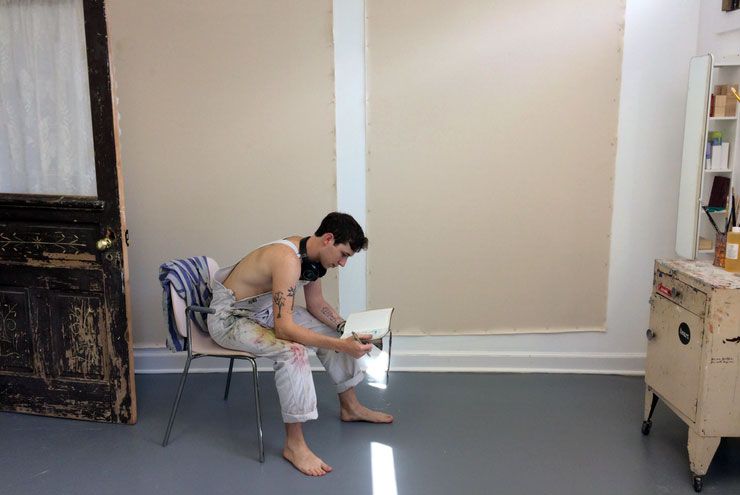
“I have received messages from people [who have seen my work] telling me they had to rethink how the LGBTQ community fits in to the narrative they created about God.” -Jonathan Kent Adams. Photo courtesy Jonathan Kent Adams.
Along with his idols—Jean-Michel Basquiat, Picasso, Lesley Dill, Sister Gertrude Morgan, and Howard Finster—Adams also finds inspiration in his faith, a theme that can be seen throughout his work. “I have received messages from people [who have seen my work] telling me they had to rethink how the LGBTQ community fits in to the narrative they created about God.”
Currently, Adams is working on completing a landscape series and booking more gallery showings. This December 6 through 10, his art will be on display at Hotel Gaythering’s Art Gaysel, an affordable gay art fair, in Miami. “Art made by LGBTQ people needs to be seen in conservative states, but I would like for more people to see my work [in general],” Adams says. “I have always dreamed of having a show in Houston, Atlanta, L.A., New York, or another country—but I know that will come at the right time.”
Jonathan’s work can be found on Instagram (@jonathan_kent_adams) or at jonathankentadams.com.


